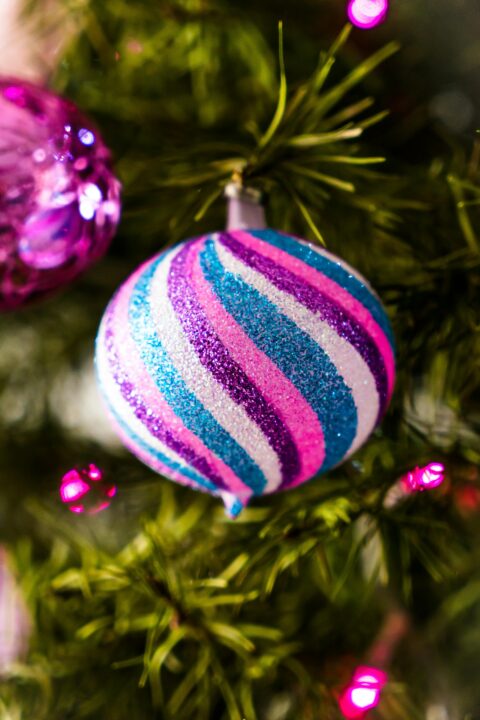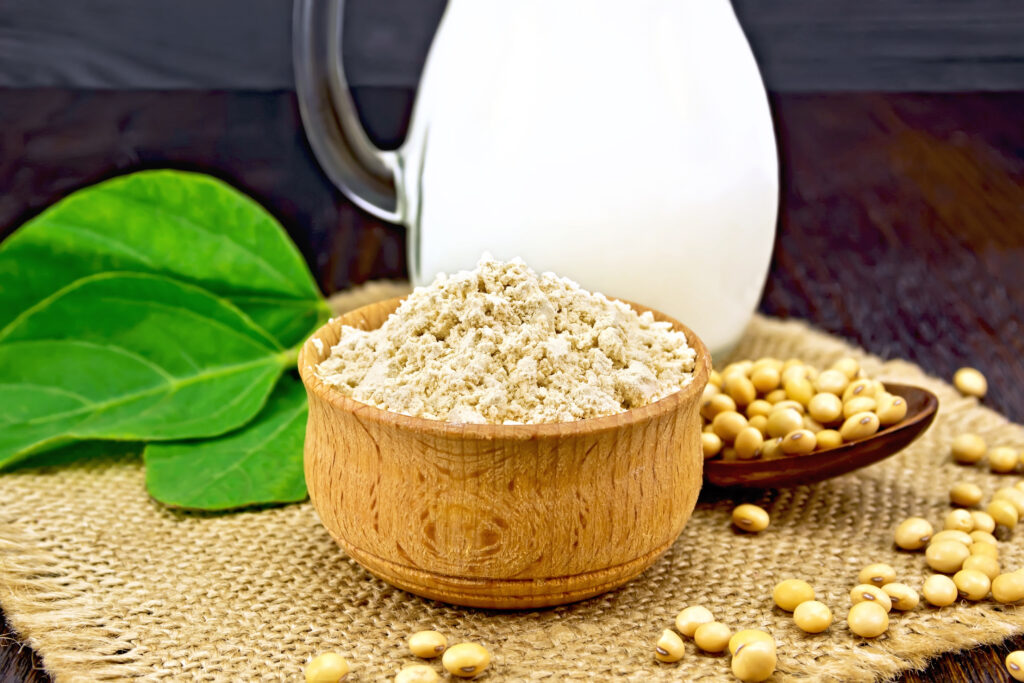Creating something excellent and unique can always be challenging, but when the result proves to be a success, the accomplishment is something to be proud of. This thought comes to mind when considering the concept of creating ombre ornaments. It is very likely that many of us have seen or heard about DIYs of ombre-dyed shirts, shorts, shoes, and even hair, but what about something a bit more festive?
Ombre is not only a stylish trend for individual style; it can give a very exquisite and aesthetic look to many sorts of craft projects. Ombre ornaments can be a fun, simple, and incredible project for not only adults but for children to get involved in as well. Ombre style allows flexibility of blending and mixing colors; your final results will always be a perfectly colored ornament but no two will be alike!
What Are Ombre Ornaments?
Imagine you’ve never laid eyes on an ombre ornament before, so allow me to enlighten you. This delightful creation is all about the mesmerizing gradient color effect it boasts. The magic happens as one shade smoothly transitions into another, marrying different hues seamlessly.
However, do not think for a moment that ombre ornaments are limited to multi-color wonders. A monochromatic plot that gradually fades into white can also create a stunning ombre effect.
Ombre ornament is basically an ornament that flaunts a gradient color scheme but the level of complexity is totally up to you. It can be as intricate as a single-color shading, changing from a captivating dark red to an enchanting light red.
Alternatively, you can embrace the beauty of multi-color shading, allowing your creativity to soar. The best part is that there are no boundaries, no limits as you can customize the design to suit your expertise level and preferences. And let’s not disregard the tremendous flexibility ombre ornaments offer! They effortlessly mix with any theme you want and with such a vast spectrum of colors to select from, you can easily discover the perfect ombre ornament for any season or occasion.
An ombre ornament is like any other ornament, made from various materials. You can use existing ornaments or buy new ones. It’s a quick, easy, and mess-free project that adds a unique touch to the Christmas tree.
Picture a cheerful set of summer ornaments, adorned with tropical ombre colors, spreading joy and vibrancy. And when it comes to Christmas, the traditional red and green gradient hues of ombre ornaments will bring new life to your festive décor. This versatility proves particularly beneficial for those planning occasions like weddings or birthdays. By incorporating ombre ornaments that mirror the event’s color theme, you create a visual feast that seamlessly ties everything together.
Types Of Ombre Ornaments
1. Glass Ombre Ornaments
Glass ombre ornaments are made using commercial or conventional kiln methods. The glass is heated gradually until it is uniformly hot and then a color is added and moved through the piece using gravity and heat. The glassblower must always turn the piece to prevent it from sagging. This process is repeated for each color change. Ombre can also be made through glass beading using enamel powders or by melting several colors of glass.
Ombre glass ornaments are a perfect addition to any Christmas tree or as part of a more permanent installation, such as a window hanging or garden piece. Since they are aging and weathering over time, ombre will stay the same and will not deteriorate or degrade.
This is due to the fact that ombre, by nature, is a layering effect and the glass is, well, just that. A person in possession of ombre glass has a sense of subtle beauty that is very exclusive. Glass art in general is an attractive choice as a gift due to its fine quality and excellence and individual expressions of love and affection, but an ombre ornament will be sure to create a lasting memory of the event intended.
2. Fabric Ombre Ornaments
Fabric ombre ornaments are basically just fabric that is decorated onto an ornament. The fabric on the ornament can be plain, tie-dyed or ombre; the conceivable outcomes are endless. Ombre is an effect where you have a color that blends into another color. Usually it is darker at the top and slowly gets lighter. Ombre can also be a single color that begins exceptionally dull and eventually gets lighter.
A fabric ombre is when there is shading in the color of a pattern or design. You can accomplish this effect by hand dyeing fabric and blending shades from light to dark. Another way is to tie fabric tightly in sections and soak in dye for varying lengths of time. Both methods can be creative and cost-effective.
Fabric ombre ornaments are exceptionally easy and simple to create. You can make these with kids or adults; they are that simple. Fabric ombre ornaments can be used year-round, depending on the fabric you choose or the shape of the ornament. This is an amazing craft to use up your fabric scraps and it offers a very versatile result.
3. Wood Ombre Ornaments
Wood ombre ornaments are another craft which is mostly used for Christmas holidays. Students practice this craft when they first start getting into more complex blending techniques. Usually, it is made in the shape of a Christmas tree, snowman, or sled to enhance the Christmas feel.
To make an ombre effect, students will use different shades of one color. This is a great way to use up scrap paper from past projects. Provide students with templates of simple shapes and Lightly trace around the edge of the shape with a pencil. Tear small pieces of colored paper, then begin tearing and gluing paper inside the shape, starting from the edge and working towards the center of the shape. As you include more layers of paper, you will need to tear smaller pieces of paper to fill the space. Make sure colors gradually change from light to dark.
If you are using an ink pad to create an ombre effect, the lightest shade of a color will be the natural ink color of the ink pad. Soak most of it with a baby wipe and also begin from the edge and work towards the center of the shape.
Continue doing this with darker shades of the color until you get to the darkest shade. With a great amount of ink on the darkest shade of the ink pad, ink the very edge of the shape to define the shape and make it pop. The ombre effect is all about gradient colors, so make sure it goes from light to dark or vice versa.
4. Clay Ombre Ornaments
Ombre, a French word meaning “shaded,” is a gradual blending of one color hue to another, usually moving tints and shades from light to dark. This effect has become increasingly well known throughout 2012 and 2013 and can be accomplished with many different mediums.
Clay ombre ornaments are simply clay ornaments decorated in ombre style. This can be done with wet paint, but the preferred method is with chalk pastels. It can easily be achieved by mixing varying amounts of white and black clay together to create a range of shades between two colors. When creating an ombre-decorated ornament, we use the color gradient on each individual clay shape to create bold and unique decorations. The subtle color change adds a touch of sophistication to a simple Christmas decoration.
Clay ornaments have versatile uses, whether it’s for celebrating the holiday season or improving the overall ambiance of a home all year. These ornaments are known for their durability and the ability to personalize them easily using rubber stamps or other embossing materials. Painting clay could be a simple and effective way to decorate it. By allowing the paint to sit for a brief period, you can effectively remove the excess, resulting in a charming “Antique Paint Effect.”
5. Metal Ombre Ornaments
Metal ombre ornaments utilize lighting and color to create an illusion of mass that is not actually present inside the sculpture itself. This is a phenomenon that happens in numerous aspects of life, whether in art or on the faces of those around us. It is the contrasting differences that compose this visual illusion. With metal ombre, we utilize the properties of metal to manipulate light to our advantage.
In order to understand the ornament techniques, we must first understand the relationship between metal and patina and the different types of metal and alloys that are utilized in the creation of ornaments that change in color, such as ombre-patinated ornaments.
Patina is a finish that is accomplished on raw metal. It refers to a film or layer that develops on the surface of the metal, which can be caused by two things: age or chemicals. There are two categories of patina: common patina and forced patina.
Common patina is achieved when the metal of the ornament is subject to natural weathering and exposure to outdoor elements. This is done by leaving the ornament outside for an extended period of time, and inevitably the metal will change colors due to oxidation, while forced patina is achieved by using chemicals on metal to create an artificial effect. By using different chemicals, artisans are able to achieve different colors of patina on metal ornaments.
Colorful gradient ombre is no longer restricted to hair or the runway. More and more, we’re seeing home decor and DIY projects featuring excellent ombre effects. Consider ombre ornaments.
rather than shelling out a lot of cash to purchase them, you can make them at home, and get just the right colors for your holiday decorating scheme Or better yet, utilize the ombre effect to match personalized ornaments to your friends’ and family members’ favorite colors!




